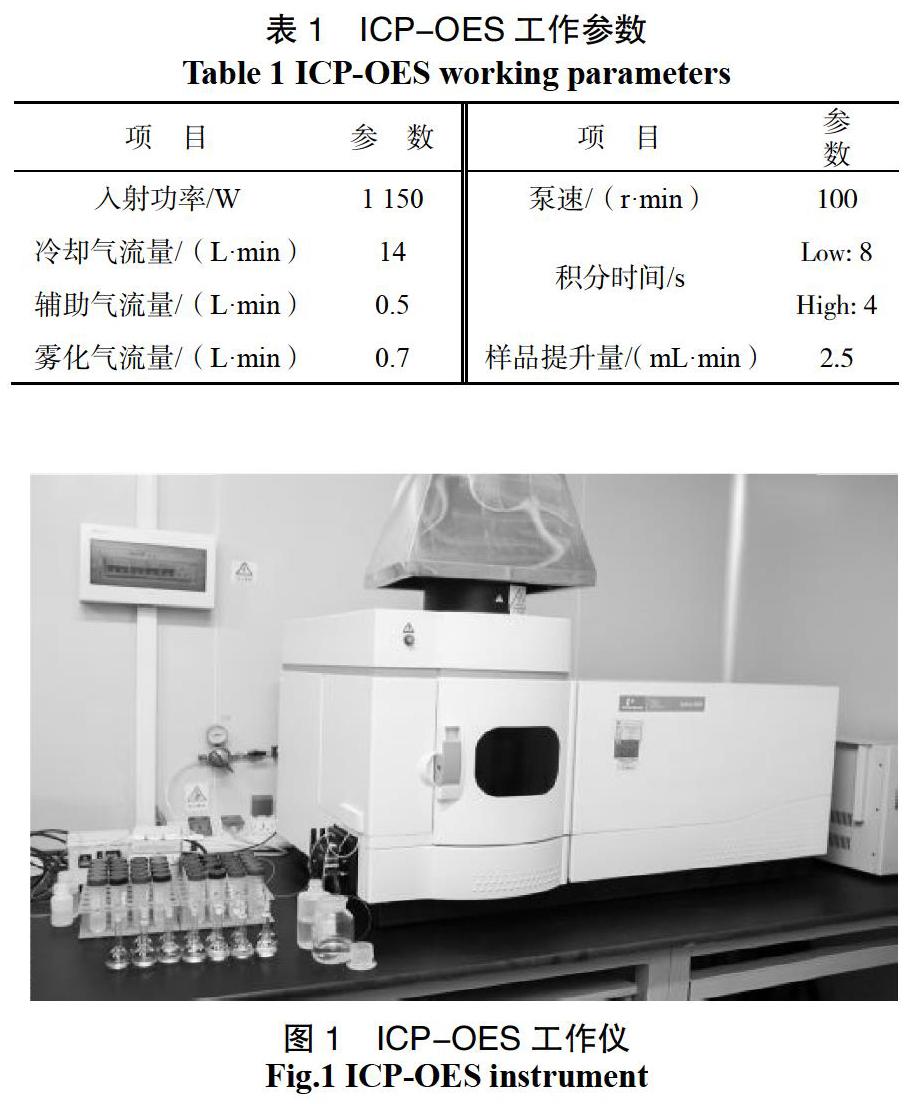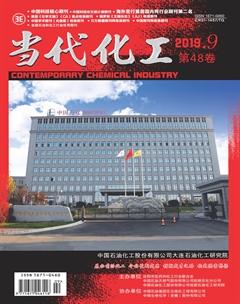电感耦合等离子体光谱法测定偏钒酸铵中16种杂质元素
魏增 柯艳 张彦斌 冯亚梅 马熠罡



摘 要: 针对测定偏钒酸铵中杂质元素实验方法准确性的问题,为进一步分析实验测定过程的影响因素及测定结果的可靠性,将偏钒酸铵样品利用热水和氨水溶解,选择电感耦合等离子体光谱法测定偏钒酸铵中16种杂质元素,实验测定过程严格按照等离子体光谱法操作流程。实验中选择了利用热水和氨水的溶解的方式、并分析了测定元素的波长,并进行了背景校正。分析了偏钒酸铵样品中杂质元素含量,选择灵敏度满足要求的谱线。利用基体匹配和同步背景校正,有效的去除了光谱干扰。实验结果表明,各元素检出限在0.000 1%~0.001 8%之间,RSD在0.40%~8.9%之间,加标回收率介于92.0%~107%之间,实验表明了电感耦合等离子体光谱法可以满足偏钒酸铵中杂质元素测定的要求,具有一定的技术优势。
关 键 词:化学分析;元素测试;偏钒酸铵;电感耦合等离子体光谱法
中图分类号:TQ 113.79; O657.31 文献标识码: A 文章编号: 1671-0460(2019)09-2121-04
Abstract: Aiming at the accuracy of the experimental method for determination of impurity elements in ammonium metavanadate, in order to further analyze the influencing factors of the experimental process and the reliability of the results, the sample of ammonium metavanadate was dissolved in hot water and ammonia water, and 16 impurity elements in ammonium metavanadate were determined by inductively coupled plasma spectrometry. In the experiment, the dissolving method of hot water and ammonia water was chosen, and the wavelength of the determined elements was analyzed, and the background correction was carried out. The content of impurity elements in ammonium metavanadate samples was analyzed, and the spectral lines with satisfactory sensitivity were selected. Matrix matching and synchronous background correction were used to remove spectral interference effectively. The experimental results showed that the detection limit of each element was between 0.0001% and 0.0018%, RSD was between 0.40% and 8.9%, and the recovery of standard addition was between 92.0% and 107%. The experimental results show that the inductively coupled plasma spectrometry can meet the requirements of impurity element determination in ammonium metavanadate and has certain technical advantages.
Key words: Chemical analysis; Element testing; Ammonium metavanadate; Inductively coupled plasma spectrometry
偏钒酸铵为白色或略带淡黄色结晶粉末,作为提炼钒的重要物质,通过提炼加工后获得五氧化二钒,最终通过一系列的冶炼过程得到金属钒、钒铁合金和其它钒基合金。同时偏钒酸铵也作为应用普遍的化学试剂、催化剂等,广泛的应用在诸多化工领域[1]。目前,测定偏钒酸铵中杂质元素的方法主要有电感耦合等离子体法和分光光度法[2-4]。其中电感耦合等离子体原子发射光谱法是目前较为流行的光谱法测定元素的方法之一,相比其他方法而言,具有检测极限小、对检测元素的反应灵敏度高、基体效应小、檢测精准度较高、能实现多元素协同检测和动态线性范围较宽等特点,在测定偏钒酸铵中的杂质方面有显著的优势。但改检测方法也有一定的弊端,即当测试样品中含量较低的元素时,由于检测干扰因素较多,使得检测过程需要考虑样品中含量较高的元素对检测结果的光谱干扰影响,目前通过检测实验分析可知,这种高含量元素造成的干扰,极大概率地造成低含量元素的测试结果产生较大的偏差[5,6]。
本文基于电感耦合等离子体原子发射光谱法,探寻了利用该方法对偏钒酸铵中杂质离子的测定实验过程,以及需和消除其它元素的光谱干扰。主要采用了波长分析、背景校正,并选择了更为良好的相互结合测定方式,有效地避免了基体元素造成的干扰影响,实验取得了较好的测试结果,验证了电感耦合等离子体光谱法测定的技术优势。

